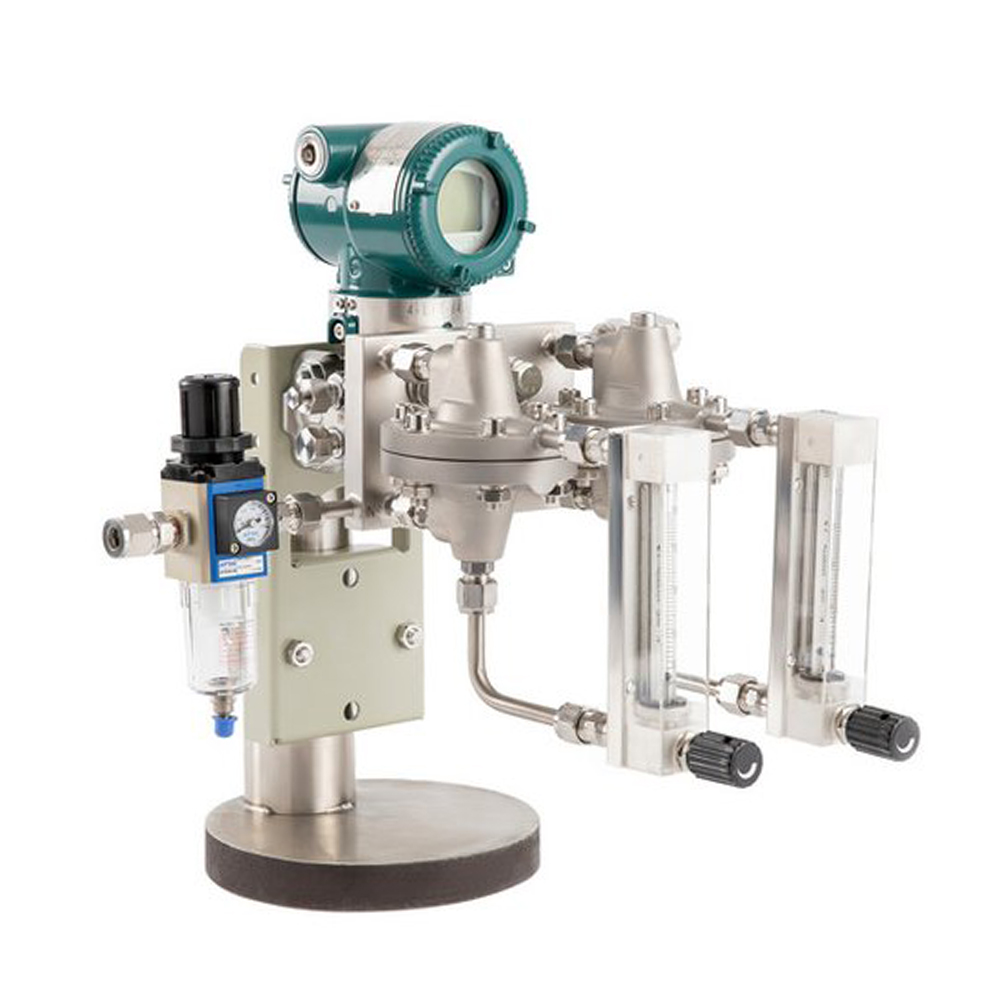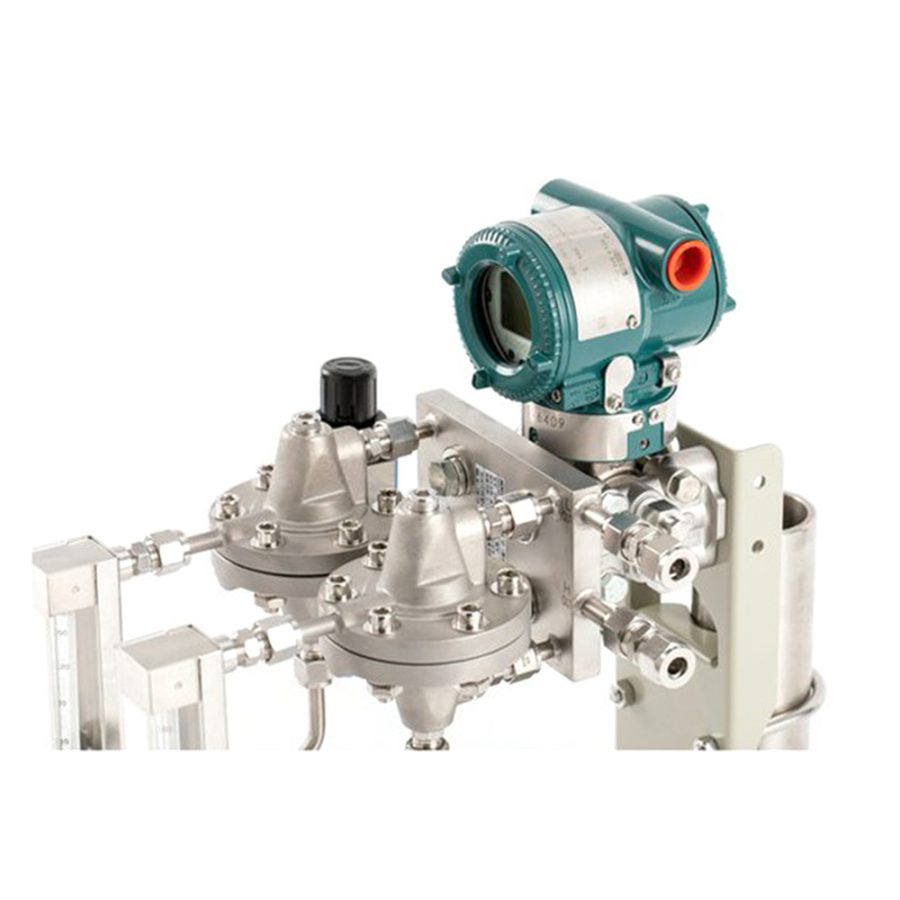Aplicação do produto
O medidor de nível de bolha (medidor de nível de sopro de ar) pode medir o nível de líquidos limpos e é mais adequado para líquidos corrosivos, líquidos com alta viscosidade, líquidos fáceis de cristalizar, líquidos de alta temperatura, líquidos contendo partículas sólidas, bem como o nível de alguns leitos fluidizados e reações de polimerização. É particularmente adequado para fibras químicas, indústria química e outras indústrias.
Princípio
O princípio da medição do nível de sopro de ar é: inserir um tubo de sopro num recipiente aberto, e o ar ou gás inerte (como o azoto) como fonte de gás é filtrado através de um filtro, e o redutor de pressão ajustável (cuja função é reduzir a pressão de alimentação para um determinado valor constante, e o tamanho da pressão constante depende da altura do nível de líquido medido) reduz a pressão para assegurar que a pressão na entrada de sopro é constante. O ar limpo é então soprado para o líquido medido através do fluxómetro flutuante, da válvula de fluxo constante e da conduta de sopro de ar. O caudal de sopro de ar é indicado pelo fluxómetro de flutuador e o caudal é definido pela válvula reguladora de caudal no fluxómetro de flutuador. O fluxo constante de gás escapa da porta inferior do tubo de sopro de ar inserido no líquido, borbulha e é descarregado para a atmosfera através do líquido. Quando há bolhas vestigiais (cerca de 25~160L/H) descarregadas da extremidade inferior do tubo de sopro de ar (porque as bolhas são vestigiais e o caudal de gás é baixo, a perda de ar ao longo do tubo de sopro de ar pode ser ignorada, pelo que a pressão do ar no tubo de sopro de ar é quase igual à pressão estática do nível do líquido), o valor da pressão indicado pelo transmissor de pressão diferencial pode refletir o nível do líquido.
Caraterísticas
O sistema de medição de nível de líquido composto pelo dispositivo de sopro de ar não tem partes móveis. Exceto o tubo de sopro de ar, os outros elementos de medição não entram em contacto com o meio medido.
Instalação de um contador, instalação de painel, estrutura opcional de um, dois ou vários canais.
Estrutura compacta e robusta, os principais componentes necessários para a medição podem ser integrados num painel, que é fácil de instalar e manter.
Estrutura totalmente mecânica, boa vedação, baixa taxa de falhas e baixa manutenção.
Etapas de depuração do medidor de nível de líquido do tipo sopro
(1) Depois de o dispositivo de sopro, o transmissor de pressão diferencial (pressão) e o tubo de sopro serem instalados no local, deve ser assegurada a estanquidade ao ar de todo o sistema de sopro. A fuga do sistema de sopro causará um grande erro no resultado da medição.
(2)O utilizador começa por ligar a fonte de alimentação do transmissor de pressão diferencial (pressão) e observa se o transmissor de pressão diferencial (pressão) indica zero. Caso contrário, ajuste o ponto zero do transmissor de pressão diferencial (pressão).
(3) Abra as válvulas de bloqueio de entrada e saída da fonte de gás no painel do dispositivo de sopro. Quando a extremidade do tubo de sopro estiver conectada à atmosfera, ajuste a pressão de saída da válvula redutora de pressão para 0,2-0,4 MPa e a taxa de fluxo de sopro para 30 L / H, e observe se o transmissor de pressão diferencial (pressão) indica zero.
(4)Insira o tubo de sopro de ar no meio medido. Quando as bolhas são sopradas de forma contínua e estável a partir da extremidade do tubo de sopro de ar, observe se a relação correspondente entre a indicação do transmissor de pressão diferencial (pressão) e o nível do líquido é consistente e se a saída é estável, e se o volume de sopro de ar é apropriado. Se a relação correspondente entre a indicação do transmissor de pressão diferencial (pressão) e a alteração do nível do líquido for normal, pode ser colocada em funcionamento.
V. Regulação dos parâmetros do instrumento do indicador de nível de líquido com sopro de ar
(1) Pressão da fonte de ar: 0,4-0,8 MPa
(2) Pressão de saída da válvula redutora de pressão: 0,2-0,4 MPa
(3) Fluxo de ar recomendado: 20~160 L/H (selecionar o fluxo adequado de acordo com as condições de trabalho no local)


